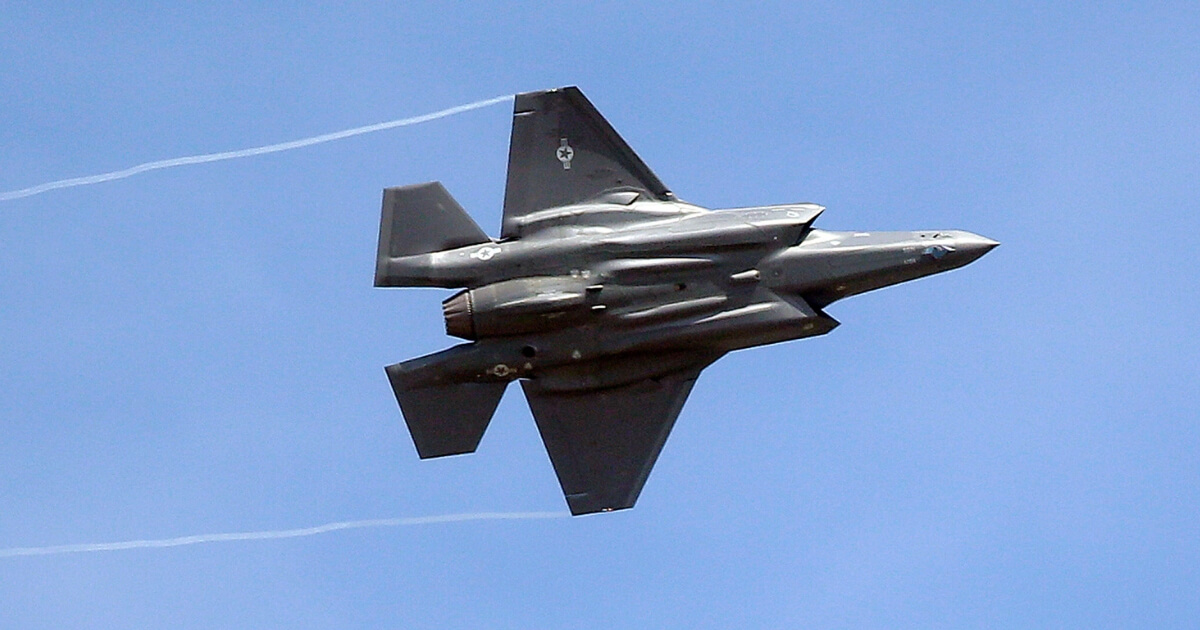
F-35 Proves Its Mettle, Targets Taliban in First Live US Sortie
The F-35 Lightning II has been a controversial aircraft since it was first sketched on the drawing board … and now two very different incidents have its opponents and its supporters buzzing.
This fifth-generation fighter is seen by many experts as the next evolution in air combat, taking cues from stealth-like platforms such as the F-22 Raptor, but also performing roles previously served by the A-10 Thunderbolt and F-18 Hornet.
There’s no doubt that the Lightning is “gee-whiz” cool. One of its variants, the F-35B, is capable of taking off from extremely short runways and even landing vertically — a trick that seems to defy gravity and has the U.S. Marine Corps salivating.
But it’s also one of the most expensive military programs in American history. Each individual aircraft costs a staggering $100 million dollars, and all told the entire program is estimated to break the bank at $1.5 trillion — yes, trillion — dollars.
Unsurprisingly, the jet has both it supporters and detractors. This week, both sides had their opinions bolstered by dramatic incidents on opposite sides of the world.
On Thursday, the F-35 was used by the U.S. in actual combat for the very first time.
“The United States used an F-35 jet against a Taliban target in Afghanistan earlier on Thursday, marking the first U.S. combat use of the stealthy plane,” reported Reuters.
Officials said that a Bravo-variant — the model capable of landing vertically — launched from the USS Essex amphibious assault ship and conducted a sortie against insurgents in Afghanistan.
That’s a nice proof-of-concept for the aircraft, which has been in the works since the mid 1990s.
At the same time, the scrappy Taliban — which became infamous during the Bush-era invasion of Afghanistan — is hardly a model target for the Lightning; It’s a bit hard to justify sending a stealthy $100 million jet to take out horse-riding nomads who have hardly any air defense at all.
Older, well-proven aircraft are equally capable of taking out unsophisticated targets like the Taliban at a much lower cost. The propeller-driven AC-130 gunship, for example, is archaic by modern standards but still rules the skies, delivering precise ground shots with an array of weaponry including an airborne Howitzer cannon.
And the venerable A-10 Thunderbolt, lovingly called the “Warthog” by most troops, is a Cold War-era flying tank hunter that is known to send the enemy into a panic when it rolls in low over the battlefield.
Just one day after the F-35 took out Taliban targets in Afghanistan, another incident made the news. This one took place on the East Coast.
“An F-35 fighter jet crashed in South Carolina, the U.S. Marine Corps said, in the first such incident to affect the most expensive defense program in the world,” The Guardian reported on Friday.
Luckily, the Marine pilot was able to eject safely, but as you might expect, the aircraft was completely destroyed when it crashed. Nothing says “ouch” quite like a $100 million smoking crater.
The crash bolstered the claims of critics who have insisted that the F-35 is over-designed and doomed to fail.
At the end of the day, both sides make valid points. On the one hand, the defense of America and its interests is one of the core missions of the government, and staying at the forefront of air supremacy as other nations like China and Russia continue to advance is clearly important.
On the other hand, the military is notorious for being far behind the curve when it comes to accurately predicting the kinds of wars it will need to fight next.
During the Vietnam War, for instance, the military brass placed most of its bets on expensive aircraft like the F-4 Phantom. The Pentagon was so confident that long-distance missiles were the future that it famously neglected to give the F-4 a traditional gun.
The result was that the U.S. ended up scrambling to keep pace against less sophisticated but very capable MiG jets supplied by Russia.
Over the next several decades, America continued to take a Cold War approach to its spending, and was caught with its proverbial pants down again when the 21st century battlefield turned out to be austere environments like Afghanistan and urban hellholes like Iraq.
We ended up fighting against insurgents — not the traditional enemies like the Soviet Union that experts had predicted. It is completely possible that the Pentagon missed the mark, and designed the Lightning for a war that will never actually be fought.
A capable military is vital, but so is spending taxpayer money wisely. Whether the F-35 was a terrible folly or a stroke of genius remains to be seen, but at least it’s finally getting some combat time after languishing for so long on paper.
Truth and Accuracy
We are committed to truth and accuracy in all of our journalism. Read our editorial standards.
Advertise with The Western Journal and reach millions of highly engaged readers, while supporting our work. Advertise Today.












